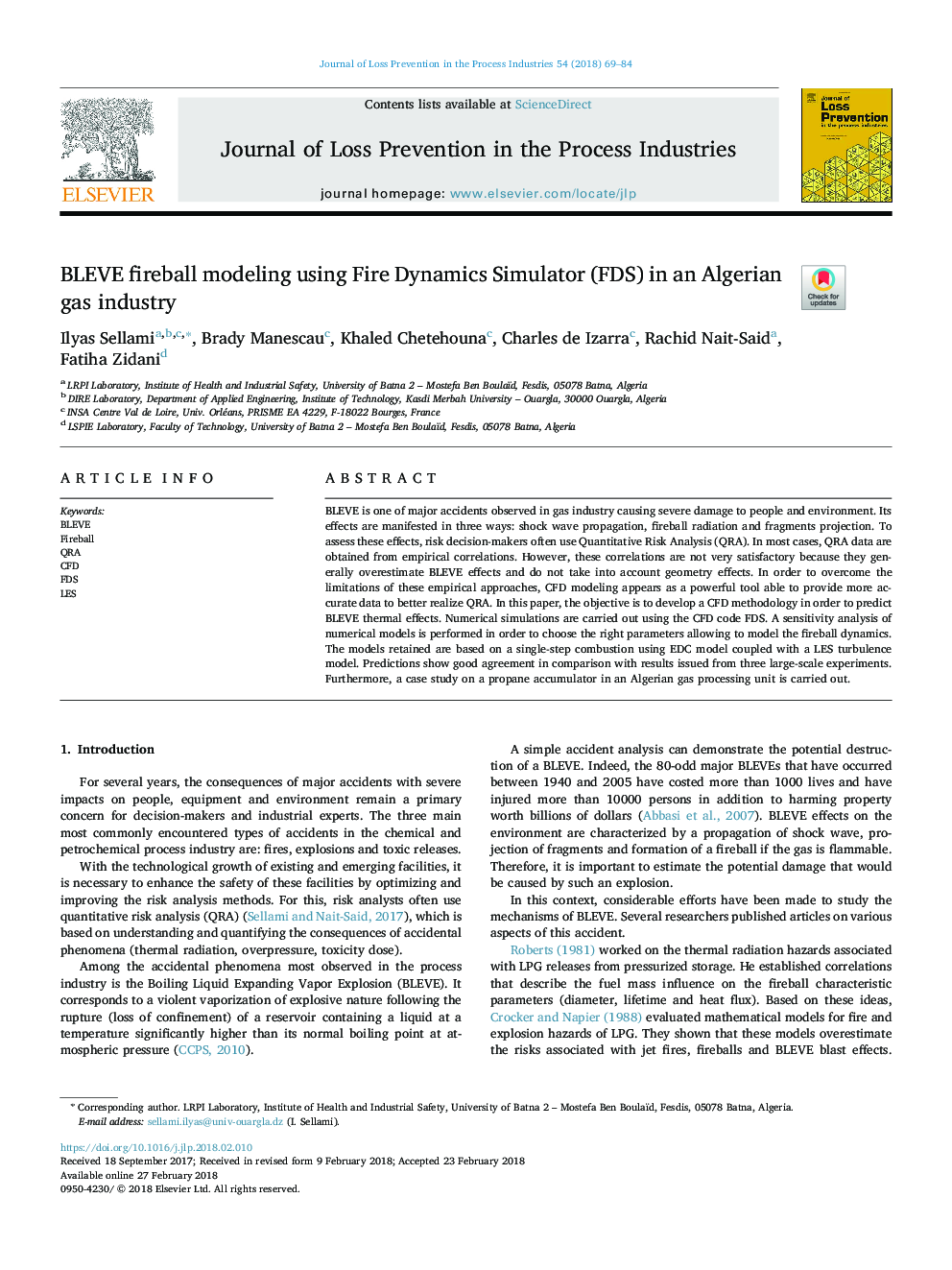| Article ID | Journal | Published Year | Pages | File Type |
|---|---|---|---|---|
| 6972823 | Journal of Loss Prevention in the Process Industries | 2018 | 16 Pages |
Abstract
BLEVE is one of major accidents observed in gas industry causing severe damage to people and environment. Its effects are manifested in three ways: shock wave propagation, fireball radiation and fragments projection. To assess these effects, risk decision-makers often use Quantitative Risk Analysis (QRA). In most cases, QRA data are obtained from empirical correlations. However, these correlations are not very satisfactory because they generally overestimate BLEVE effects and do not take into account geometry effects. In order to overcome the limitations of these empirical approaches, CFD modeling appears as a powerful tool able to provide more accurate data to better realize QRA. In this paper, the objective is to develop a CFD methodology in order to predict BLEVE thermal effects. Numerical simulations are carried out using the CFD code FDS. A sensitivity analysis of numerical models is performed in order to choose the right parameters allowing to model the fireball dynamics. The models retained are based on a single-step combustion using EDC model coupled with a LES turbulence model. Predictions show good agreement in comparison with results issued from three large-scale experiments. Furthermore, a case study on a propane accumulator in an Algerian gas processing unit is carried out.
Related Topics
Physical Sciences and Engineering
Chemical Engineering
Chemical Health and Safety
Authors
Ilyas Sellami, Brady Manescau, Khaled Chetehouna, Charles de Izarra, Rachid Nait-Said, Fatiha Zidani,
